and
Prospective Mines
ix. The question “How many large mines are operating in Alaska?” can be answered with one hand plus an extra finger. Six large-scale mineral producers collectively employed nearly 2,700 workers in 2019. Alaska’s mines produced nearly $4 billion worth of non-fuel minerals in 2021, from vast quantities of zinc and lead to precious gold and silver. More projects are lined up to join them, aiming to enlarge the statewide mineral portfolio to a second or third handful of mines, extracting copper, cobalt, and rare earth elements (REE). What follows is an overview of Alaska’s mines, those in production and in the advanced exploration or permitting stages.
Fort Knox
Kinross Fort Knox spent a total of $377 million in Alaska in 2021, a contribution of 6 percent to the gross domestic product of the Fairbanks-North Star Borough. Between contractors and Kinross employees, Fort Knox accounts for approximately 4 percent of jobs in the Interior region. The company also received the Business of the Year award from the Greater Fairbanks Chamber of Commerce.
NANA
NANA
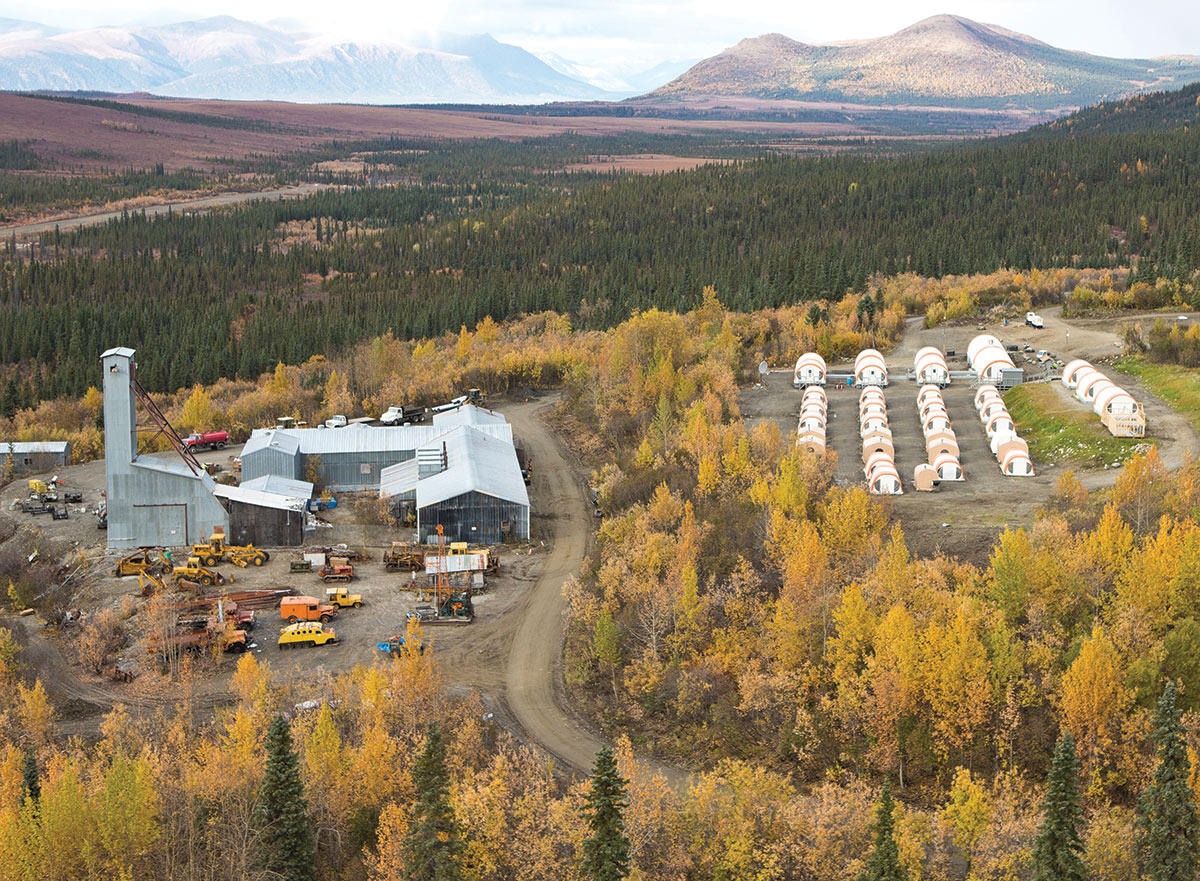
The company expects the US Forest Service to begin taking public comment in January on its Draft Supplemental Environmental Impact Statement for a request to expand the mine’s tailings storage facility by approximately 13.7 acres. For the only mine operating inside a national monument, it’s a tricky project, but one that could extend Greens Creek’s operations for another decade. According to a Hecla spokesperson, “The expansion is designed to avoid any new Monument disturbance outside the existing lease boundary, avert any disturbance to the fish-bearing reaches of Tributary Creek, eliminate the need to construct a new, ‘remote’ tailings facility, and continue the use of a ‘dry-stack’ tailings disposal method.”
In its 2022 second quarter report, Coeur Alaska anticipated full-year production to be 110,000 to 120,000 ounces of gold. Kensington’s gold production for the April-to-June quarter increased 23 percent versus the first quarter, driven by mill throughput that set a quarterly record.
Kensington Mine has been engaged in permitting efforts for the last several years. Coeur Alaska proposed an amendment to its Plan of Operations (POA 1) to increase tailings and waste rock storage capacity to reflect positive exploration results, improved metal prices, and ongoing operational efficiencies. On February 24, 2022, the US Forest Service released the final Record of Decision in support of POA 1. Coeur Alaska will continue to work with federal, state, and local regulators to execute the plan and permit associated facilities.
Coeur Mining, parent company of Coeur Alaska, increased its exploration investment for 2022 by approximately $11 million due to positive drilling results. The Q2 report states that approximately $1.6 million was invested in Kensington’s exploration efforts in the first half of 2022, and late 2022 exploration drilling is focused on continued expansion and infilling of Elmira, Johnson, Kensington, Jualin, and Raven targets.
NANA
NANA
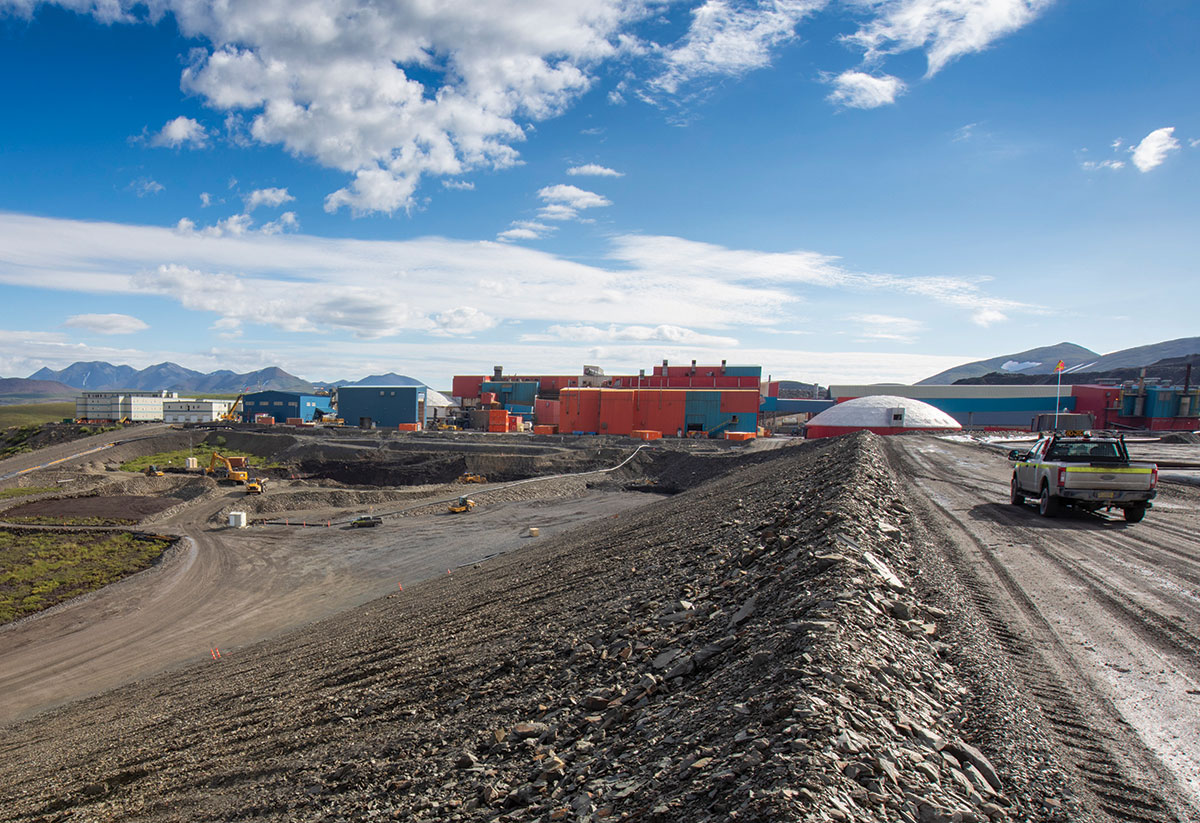
In 2021 Coeur Alaska committed $52,000 to the Juneau Carbon Offset Fund (JCOF), a special project of Renewable Juneau, a nonprofit that works toward clean energy for Juneau. The contribution divides into $35,000 to offset crew transport vessel emissions and to support heat pumps for lower income families and $17,000 for JCOF to seek third-party certification as an official carbon offset project. In 2021 Coeur Alaska’s contribution through JCOF helped to offset 1,572 tons of carbon dioxide emissions. Coeur Alaska strengthened its commitment in 2022 by contributing another $50,000 to JCOF.
The mine’s website notes that “extensive exploration efforts are underway to identify additional ore reserves” at Pogo, saying that the mine site shows five known deposits, but that “the extent of these deposits is not clearly defined, creating the possibility to extend the life of the mine. Pogo has a robust exploration program and the technical services team is working hard to ensure that Pogo will operate for many years into the future.”
Approximately 80 percent of revenue from Red Dog derives from zinc. To turn the concentrate into metal, the material is shipped to smelters around the world, but only during open-water season. After October, concentrates are stockpiled near shore until ships return in the spring. So far in 2022, fifteen ships have carried away 700,000 tonnes of zinc concentrate.
With less than a decade left in Red Dog’s operational life, Teck is doing additional exploration on state land known as the Aktigiruq and Anarraaq (A&A) deposits. By further exploring these two zinc deposits, Teck will have a better idea of the zinc-lead content within each one. These studies will help determine the viability of potential mining, though it will take several more years to reach an investment decision.
As another part of the exploration program, Teck applied for a permit with the Alaska Department of Natural Resources (DNR) to build a 10-mile road extension to the A&A deposits, along with related facilities and bridges.
Coeur
Coeur
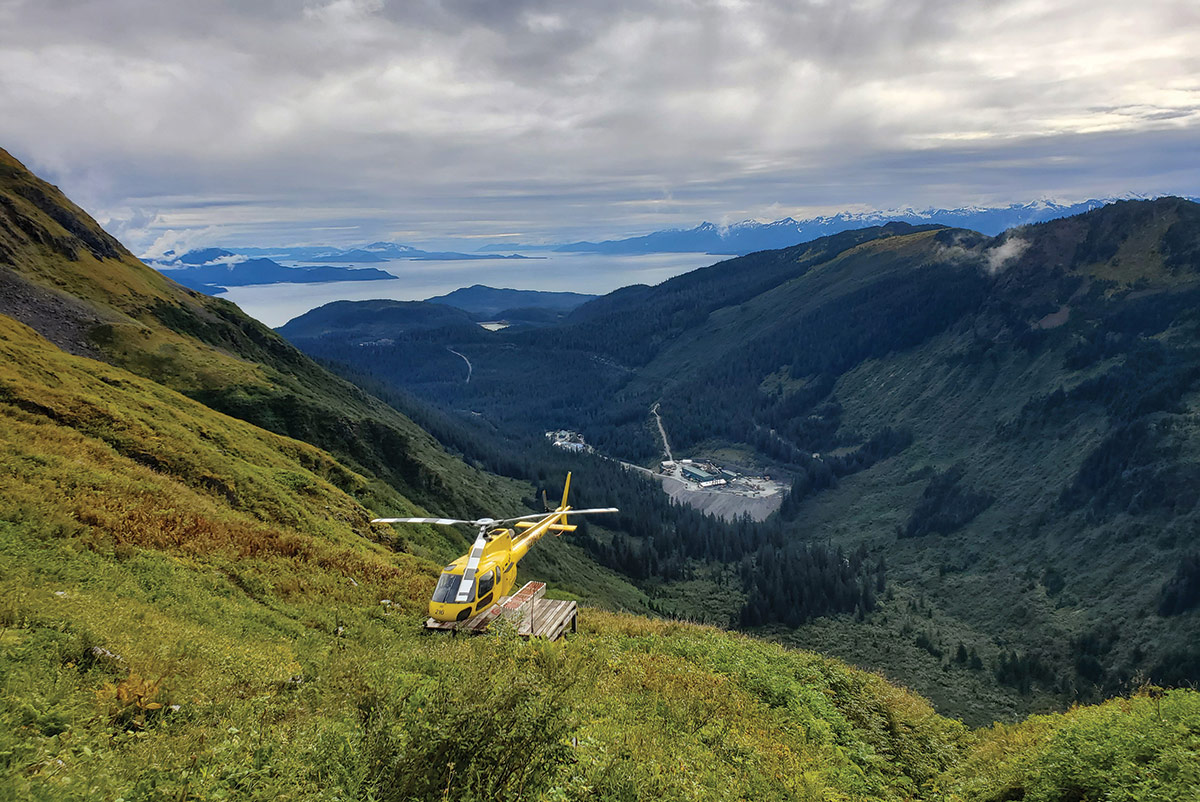
In 2021, Usibelli attained Phase III bond release for 367 acres of its Poker Flats area by successfully showing the diversity of vegetation coverage. The company had pledged $2.5 million for cleanup when mining began there nearly forty years earlier, and the completion of reclamation released the last $411,000 held by DNR. For his work, the company’s reclamation engineer, Rich Sivils, earned the 2022 Reclamationist of the Year award from the American Society of Reclamation Sciences.
Donlin Gold
The exploration budget for 2022 was the largest in a decade, based on 2021 drilling results. Barrick Gold and NOVAGOLD, which are 50/50 owners in the venture, say assay results from this summer’s drilling support recent modeling concepts and strategic mine planning work. The mine is being developed on land owned by Calista Corporation and The Kuskokwim Corporation, the joint corporation for ten villages in the region. All federal permits are in hand, as are all but a few state permits.
In May, the environmental law group Earthjustice filed suit on behalf of the Native Village of Eek and the Orutsararmiut Native Council, the tribal association for Bethel, challenging DNR’s decision to issue Donlin Gold twelve water sourcing permits.
In July, a wildfire damaged some exploration equipment at a supply camp about 17 miles from the village of Iliamna. No one was injured, but the mishap followed a disappointment in May when the US Environmental Protection Agency (EPA) issued a proposed determination to prohibit the discharge of mine waste into streams. That proposal is currently under appeal, as is the US Army Corps of Engineers’ permit denial from November 2020.
Coeur
Coeur
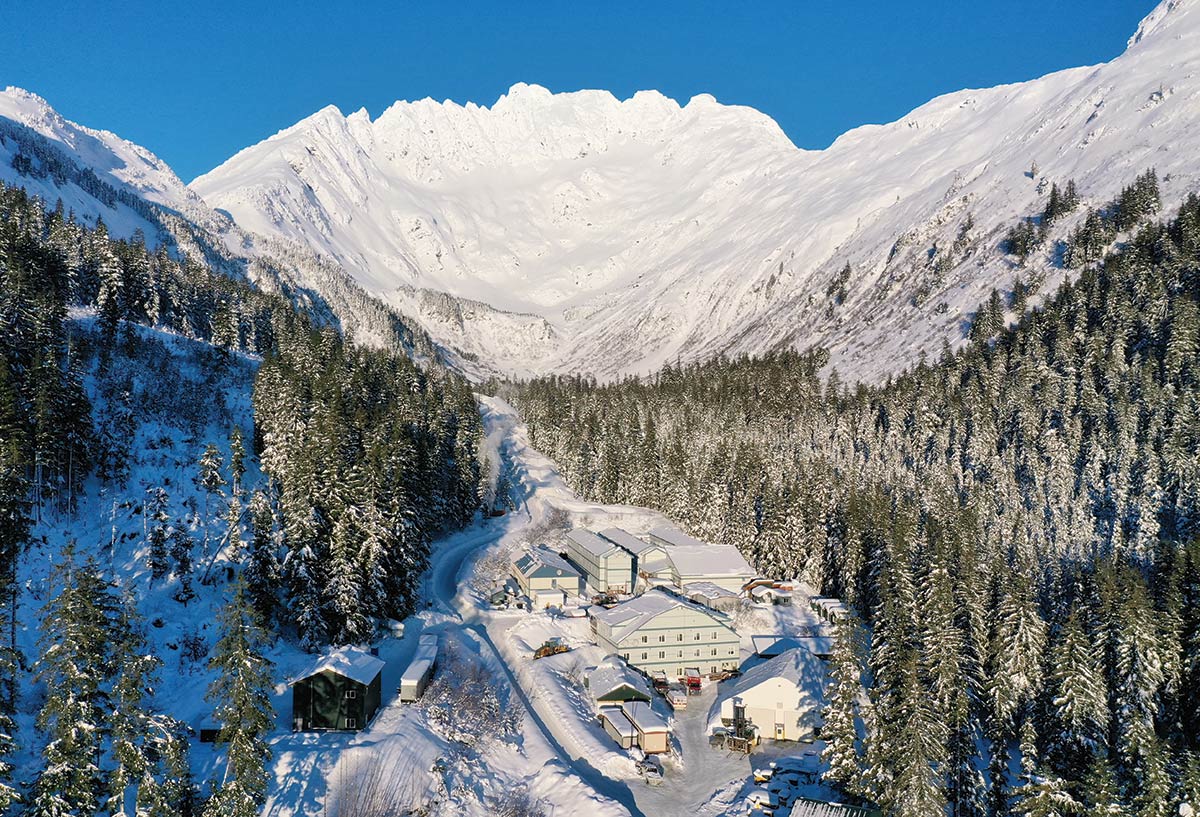
Bokan Mountain
Additional funding for the project was completed in February 2021, and the pre-feasibility study resumed in March 2021. A summer 2021 field program included infill and step out core drilling and additional core and sonic drilling for geotechnical data collection in the proposed mill site and dry tailings/waste rock storage area. The drill program generated additional information to update the resource model and provide technical data for the feasibility study. Other work included access route engineering, surface water and groundwater hydrology studies, wetlands mapping, and aquatic life surveys.
Carter Damaska | Alaska Business
Carter Damaska | Alaska Business
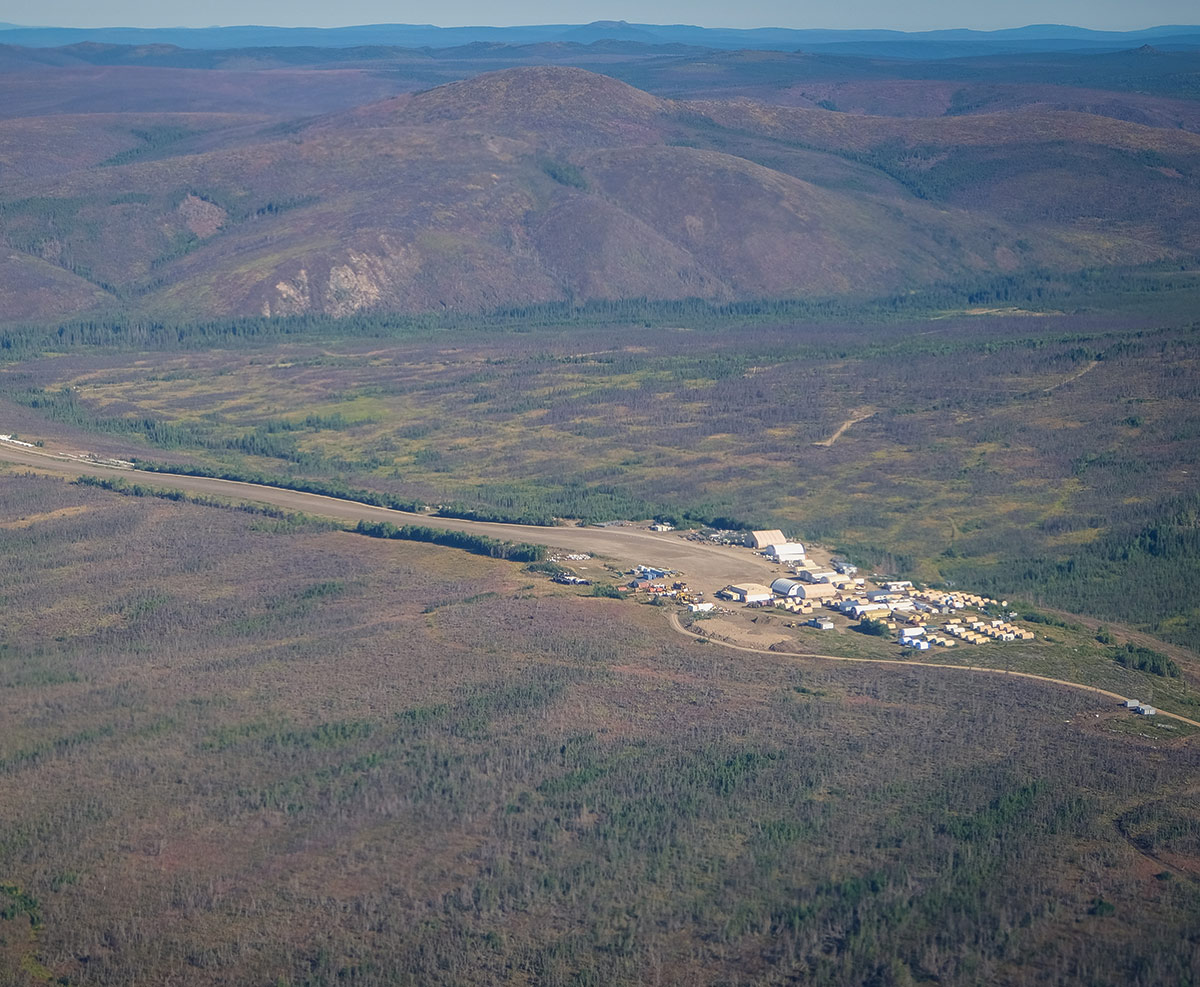
The UKMP consists of a 448,217 acres of Native, state, and patented lands. The two most advanced projects are the feasibility-stage Arctic copper-zinc-lead-gold-silver VMS deposit and the Bornite copper-cobalt carbonate replacement project.
The 2022 exploration program was budgeted at approximately $28.5 million.
As of this month, the US Bureau of Land Management is concluding the public input phase of scoping for a new environmental review of a 211-mile access road to the Ambler Mining District from the Dalton Highway. A right-of-way through Gates of the Arctic National Park had been granted in 2020, but after the change of administrations, the Interior Department decided the environmental impact statement was insufficient. ![]()